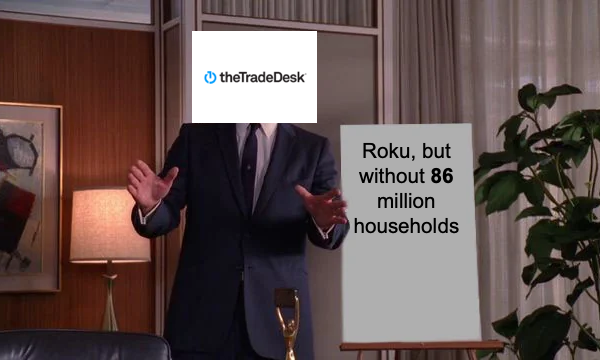
Six big questions re: cord-cutting:
1) How do Americans receive television?
2) How many homes subscribe to a pay-TV bundle?
3) What share of pay-TV subscriptions is streaming?
4) Are streaming pay-TV services replacing all the subscribers leaving traditional pay-TV?
5) Is time spent with cable declining at the same rate as subscribers?
6) Where is the bottom for pay-TV subscriptions?
Big question #1: How do Americans receive television?
Share of U.S. TV households by source according to Nielsen:
1) Traditional pay-TV – 46%
2) Broadband-only – 40%
3) Antenna (OTA) – 14%

Big question #2: How many homes subscribe to a pay-TV bundle?
Quick answer: 71M (54% of all HH)
YoY change in pay-TV subscribers according to Leichtman Research Group:
1) Traditional pay-TV – ↓ 6.8M
2) Streaming pay-TV – ↑ 2.1M
3) Total pay-TV – ↓ 4.7M

Total pay-TV subscriptions (YoY growth):
1) 2018 – 92.3M
2) 2019 – 89.1M (↓ 4%)
3) 2020 – 85.6M (↓ 4%)
4) 2021 – 80.7M (↓ 6%)
5) 2022 – 76.0M (↓ 6%)
6) 2023 – 71.2M (↓ 6%)

Big question #3: What share of pay-TV subscriptions is streaming?
Quick answer: 23%
Streaming pay-TV subscriptions (YoY growth):
1) 2018 – 7.2M
2) 2019 – 9.6M (↑ 33%)
3) 2020 – 12.0M (↑ 25%)
4) 2021 – 12.5M (↑ 4%)
5) 2022 – 14.1M (↑ 12%)
6) 2023 – 16.2M (↑ 15%)
Streaming share of pay-TV subscribers:
1) 2018 – 8%
2) 2019 – 11%
3) 2020 – 14%
4) 2021 – 16%
5) 2022 – 19%
6) 2023 – 23%
Flashback: YouTube TV: A Pit Stop on the Road to Cord Cutting or the Future of Pay-TV?
Big question #4: Are streaming pay-TV services replacing all the subscribers leaving traditional pay-TV?
Quick answer: No. For every new streaming pay-TV subscriber, 3 traditional subscribers canceled.
Big question #5: Is time spent with cable declining at the same rate as subscribers?
Quick answer: No. Time spent is declining 1.5X as fast as subscribers.

Quote from David Bauder – National Media and Entertainment Writer @ The Associated Press:
“If fewer people have cable, then obviously fewer are watching. But it’s a classic chicken-and-egg situation: Have the number of subscribers dropped because people feel the networks have less to offer? Or is less being offered because there are fewer viewers?”
Why this matters: People who pay $100+ per month for pay-TV but watch it less are the most likely to cut the cord. Last year, the people who canceled watched more than the average. If true, most of the remaining subscriber base watches less than average.
Canary in the coal mine: Vizio released data showing that 6% of their install base with pay-TV no longer watches it.

% of U.S. pay-TV households with YoY decrease in viewing time according to Vizio:
1) 100% decrease – 6%
2) 75-99% – 6%
3) 50-75% – 11%

Missing data: It would be interesting to see this data overlaid with another variable like income. For example, the Screens household has pay-TV, but it is not uncommon for the 30 minutes of Pardon the Interruption to be the only pay-TV content watched on a given day.
Big question #6: Where is the bottom for pay-TV subscriptions?
Quick answer: Kagan projects another 11.1M (↓ 16%) cord-cutters by 2027.

Quote from Michael Nathanson – Analyst @ MoffettNathanson:
“The picture is not one that suggests that a plateau in the rate of decline is coming anytime soon.”
Big picture: The share of U.S. households with a pay-TV package is 54%, the lowest since 1989.




